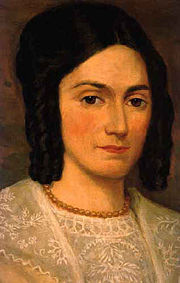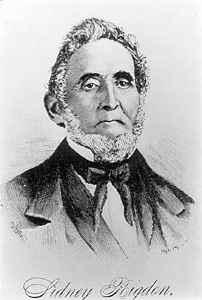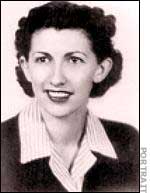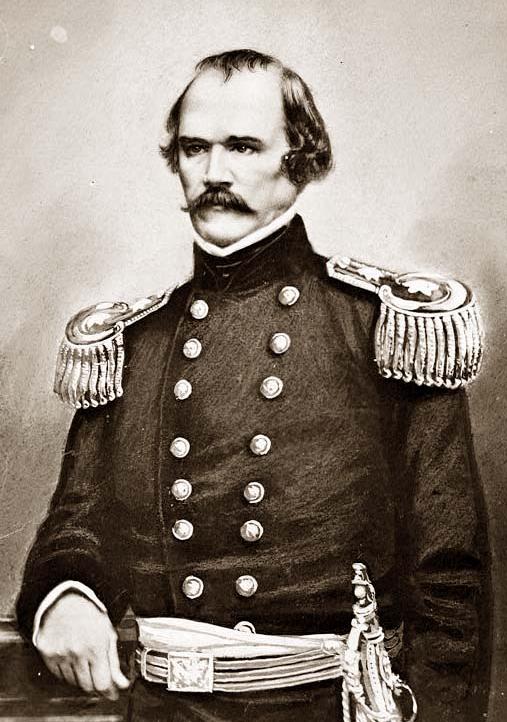Everyone loves a good villain…the bellowing laugh with hands thrown up in the air utter triumph. As a child, I found Dr. Claw of Inspector Gadget fame to be wildly amusing. The Joker has quickly reached pop-culture stardom as people would practice their Joker impressions of “Why So Serious?” Good cartoonish villainy makes for good parties.
Hadyn White maintains that every history, in spite of its claims to objectivity, is constructed in literary fashion with traditional literary tropes such as villains, comic reliefs, and heroes. Indeed, White would conclude, we see our very world as a story…and therefore, the job of a historian is to point out our way of making history more than the history itself. Hence, the title of his magnum opus, Metahistory.
So who gets under our collective skin? You know…the folks who have been able to get inside our heads and poke us where it hurts? As we will find (surprise, surprise), there is no one archetype for the Mormon villain. Each of these villains represents a strand of our thought our culture that has been particularly vulnerable. We will see the Benedict Arnolds, the political activists, the heretics, and the downright scoundrels. Some have even worn a denim jumper or two in their lifetime…
Some observations are in order:
A) Some of these individuals, I guarantee, will be seen as heroes by Mormon Matters readers. However, as I’m sure these readers recognize, these heroic efforts are generally those of a dissenter…and in order for a dissenter to become famous, s/he has to tick off the powers that be in large numbers. So alas…they make the list.
B) Most of these villains have varying degrees of admirable traits. We’re talking about perception and not reality. I, for one, would gladly eat lunch with most “villains” on this list.
So behold…
10. Emma Smith

Poor sister Emma…while she is beloved as a heroine in much of the contemporary Church (of course, we all have the resident Emma-hater), Emma was not always perceived as one. In the aftermath of the Exodus from Nauvoo, Emma not only stayed behind but also kept several of Joseph’s personal belongings that Brigham believed belonged to the Church. In addition, she offered some support to Joseph III in establishing the RLDS church. Her son, David, eventually went to a mental institution in the aftermath of learning of his father’s polygamy while he served an RLDS mission to Utah–thus blackening her name even further with the Utah leadership. Brigham Young even accused her of trying poison Joseph and called her a “child of hell.” Thankfully, we can appreciate Emma for her tremendous accomplishments now.
9. Sidney Rigdon

Sidney has, quite sadly, been classified among the “crazy uncles” category of Mormon history. Yet he served for nearly ten years as the Joseph Smith’s proverbial Aaron. Despite his impressive service and considerable contribution to the Church with his Campbellite congregation, he has something on record to annoy just about every faction of the Church–from “when the prophet has spoken the thinking is done” orthodoxy to the postmodern, “scripture is inspired fiction” free-wheelers. In the months leading up to the Missouri War, he proved his capacity to inflame when giving the famous Salt Sermon–which implied that the expulsion of prominent apostates such as W.W. Phelps and Oliver Cowdery would be forthcoming. He became the bete noire of the succession crisis as he attempted to convince the Latter-day Saints that Joseph Smith had appointed him to be the leader. In historical memory, Rigdon has not been painted in the darkest hues; his villainy is often viewed as delusions and nothing more–delusions that could easily be brushed off into the ash-bin of history
8. Albert Sydney Johnson
A significant figure in 19th-century American military history in his own right, it’s ironic indeed that his greatest legacy is outside scholarly circles is as a part of an anticlimactic military operation that saw no bonafide engagement of enemies: the Utah War. He led, in all, over 5,000 troops to put down a supposed rebellion of Utah against the federal government. Congress widely opposed the expedition (most notably Sam Houston), and eventually would deem it “Buchanan’s blunder.” However, Utah remained under military occupation (albeit limited) For modern Latter-day Saints, Johnson serves more as a symbol of the animosity between the pioneers and the federal government than as an actual executor
7. John D. Lee A looming figure in not only Mormon history, but in the history of the West, John D. Lee has been kicked around as the football in the hands of Mountain Meadows historians. Aside from the elephant in the room that is the MMM, John D. Lee was otherwise a hard-working LDS who contriubted significantly to his community.
A looming figure in not only Mormon history, but in the history of the West, John D. Lee has been kicked around as the football in the hands of Mountain Meadows historians. Aside from the elephant in the room that is the MMM, John D. Lee was otherwise a hard-working LDS who contriubted significantly to his community.
Having Been depicted as everything from a loyal scapegoat and hack to a renegade, John D. Lee has borne much of the blame for the attacks. Juanita Brooks’ research demonstrated that Lee’s excommunication and execution was simply meant to relieve pressure from the federal authorities’ constant haranguing. Walker, et. al. has concluded that John D. Lee played a central role in the massacre in both planning and deed (the topic looms too large for extensive treatment in this, a rather superfluous article by comparison–see the book that needs no introduction, Massacre at Mountain Meadows, for more info). In either interpretation, Lee’s name is often one of the few names to be mentioned within popular discourse about the massacre, in spite of the dozens of Iron County militiamen participation. Lee has come to symbolize the violent streak–if there be one–within 19th-century Mormonism–the crazy uncle in the attic.
6. Fawn Brodie
Niece of President David O. McKay and husband of a famed of nuclear theorist, Bernard Brodie, who helped to craft Eisenhower-era nuclear deterrence strategy; Fawn Brodie made fame in both critical and liberal Mormon circles by publishing one of the first scholarly biographies of Joseph Smith to reach wide circulation, No Man Knows My History. Brodie was roundly denounced and excommunicated within a year of publication. Whether she deserved such denunciation or not (I’m intentionally avoiding that elephant in the room), Brodie’s name has come to symbolize the “pointy-headed intellectual” stock character for modern Mormons. One of my contacts has informed me that when Richard Bushman presented Rough Stone Rolling to Knopf, they initially hesitated. Bushman responded that they owed him one: “After all, you published Brodie.” The argument was persuasive.


Comments 16
Great post Russ. It makes me think that perhaps any group of people is defined more by who they see as villains than who they see as heroes.
Luckily, I feel like the tide of opinion has turned on at least a couple of your entries. Emma, for instance. I’ve heard a lot more apologists lately for Emma than against her, but this could just be reactive to the pendulum having been swung all the way in the opposite direction.
Boo! Hiss! Not at you, Russell, but at your gallery of scapegraces. I love a good villain in the melodrama of history and look forward to learning who you put in the top five slots. Clever idea.
One commonality among these five is that although we have reason to dislike them, in varying degrees, what they did to win disfavor is a very small part of their lives, overall, and if we were fair we would admit that the good they did far outweighs the bad (in general, I mean — murder is so bad that nothing overcomes it, but still, Lee made huge contributions to the kingdom before that September). We really ought to be more informed and more fair.
I think Fawn Brodie does represent the intellectuals on both sides of the Mormon/anti-Mormon fence. From the research I’ve done (and it could be incomplete or wrong), she had unprecedented access to records and her conclusions were interesting to say the least.
I don’t think that intellectuals should have been / be handled that way. I think that she could have contributed a lot to our faith if things would have been handled differently by both sides.
I agree with #2. We can learn a lot from the people on this list. Concepts such as duty, honor, and loyalty are a few. Judging someone’s entire life and character based on a short period in time is unfair. I’m really interested in seeing what the second half of the list is. I have a few ideas, but I’ll keep quite for now.
I think this list needs some flavor. Here is how I would complete the last 5 spots in your list:
5. Henry D. Moyle
4. Mark E. Petersen
3. Joseph Fielding Smith
2. Bruce R. McKonkie
1. Brigham Young
Enjoy
I’m thinking of the guy who was sent to represent the church in buying the island of Lanai for the Hawaiian members to gather and put the deed in his own name. This led to the subsequent purchase of the Laie plantation, or that’s how I remember the story.
Russell: I don’t think Emma Smith and Sidney Rigdon legitimately make the lisk.
Better villains in Mormon culture are:
Cain
Satan
Korihor
Ammonihah
Zarahemnah
Better villains in Mormon history are:
John C. Bennet
Ed Decker
Lilburn Boggs
Clay – LOL. Good retort! I think there are 2 kinds of Mormons: BRMers and non-BRMers. I suspect most who appreciate nuance are not big BRM fans.
Russell – controversial, but well done.
I also vote Jon C Bennett as a pretty big villain. Sidney Rigdon was mostly a good guy. Emma’s a bit of, well, an enigma.
What’s a BRM?
#9 – Sorry, but that made me laugh. I changed diapers of six kids, so when I see the letters BM in that type of question (“What’s **a** BRM?”) I automatically wonder what the “R” stands for. Rigid? Rotten? Retching? Like I said, sorry.
BRM is Bruce R. McConkie – someone who is very, very sure s/he knows the answer to any question.
How about another one for the rogue’s gallery? Samuel Brannan.
Author
I’m already seeing the guesses (both first and second-guesses) coming in…some of you may be right…others? *scratching neck a la Godfather* maybe yes and maybe no…
I considered using scriptural references, but in general, they just don’t seem to get folks feathers riled. Laman and Lemuel make for lessons learned…you’re not going to see someone seethe about how big of an apostate Laman and Lemueul and rail about how they’re traitors. Maybe a snide remark about “How could they be stupid?” but that’s about it from my experience in the Happy Valley corridor.
As far as Emma and Sidney, the former easily makes the list in my view. The Relief Society was in part shut down because of perceived grievances…I hear a few (though very few snide) remarks about her to this day. Most of the 19th century Saints reviled her for deceiving her son David re: polygamy and for staying behind in Nauvoo. The animosty between Young and Smith was epic and trickled down through the Saints. Only within the past half century have we seen her reputation revived as the elect lady I believe she was.
And Sidney Rigdon?? Was he really remembered for his contributions, esp. when Joseph himself disavowed him? When Sidney declared himself to be the prophet, at odds with Brigham Young’s claims? He became the divider, nay, the false prophet who was trying to exploit Joseph’s legacy. While one could argue that there are others who fit the bill, one can hardly maintain that Sidney Rigdon didn’t represent a deep challenge to Brigham Young’s (and therefore, the Utah Saints’) legitimacy.
Russell, Sidney’s succession claim was not as threatening as Strang. Strangites were almost as numerous as Brighamites for a while due to the Strangite rejection of polygamy which they later (much later) recanted. Rigdon’s love of communal living killed his followership. I guess you can’t teach an old dog new tricks. And Rigdon was also not a terribly serious rival to Young as he had clearly not been endowed.
Author
Very true, hawk…but the weakness of his opposition, as I see it, does nothing to weaken his villain status. In some ways it strengthens it. Without a movement, he could be easily cast aside as a heretic…a villain as it were. My post is not about the actual substance of one’s contributions…it’s about their perceived status in the community. I pick Rigdon over Strang b/c he could be easily categorized and marginalized where as Strang could not be as easily. At any rate, Rigdon’s weak defense–at the very least–is independent of his villain status.
I know we’re getting a little postmodern here, but that’s the nature of the animal. Hayden White rocks my world.
Rigdon likely suffered the mentally destabilizing effects of the tarring and feathering he was subjected to, as well as a blow to the head during it, that some believe makes him more of a tragic figure and less of a villain.
Plus, my goodness, Joseph disavowed most of the leaders at one time or another! He then would welcome them warmly back to the fold a week or two later…his character in this regard, unlike, say Brigham Young, was notoriously unstable.
Author
“A) Some of these individuals, I guarantee, will be seen as heroes (or “tragic figures”) by Mormon Matters readers. However, as I’m sure these readers recognize, these heroic efforts are generally those of a dissenter…and in order for a dissenter to become famous, s/he has to tick off the powers that be in large numbers. So alas…they make the list.”
*Insert Russell’s politician voice*
The perceptions of the LDS people don’t represent me or my campaign…